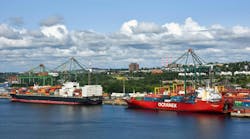Latest from Economic Data
New Data for Electrical Product Sales Estimates
Building permits slide in December. Privately-owned housing units authorized by building permits in December were at a seasonally adjusted annual rate of 1.032 million, 1.9% below the revised November rate of 1.052 million, but 1% above the Dec. 2013 estimate of 1.022 million. Single-family authorizations in December were at a rate of 667,000, 4.5% above the revised November figure of 638,000. Authorizations of units in buildings with five units or more were at a rate of 338,000 in December. An estimated 1.032 million units were authorized by building permits in 2014, 4.2% above the 2013 figure of 990,800.
Architecture Billings Index ends 2014 with solid increase. With ten out of twelve months of increasing demand for design services in 2014, the Architecture Billings Index (ABI) points to a healthy outlook for the nonresidential construction industry. Published by the American Institute of Architects (AIA), Washington, D.C., as a leading economic indicator of construction activity, the ABI reflects the approximate nine- to twelve-month lead time between architecture billings and construction spending. AIA reported the December ABI score was 52.2 points, up from a mark of 50.9 points in November. This score reflects an increase in design activity (any score above 50 indicates an increase in billings).
“Business conditions continue to be the strongest at architecture firms in the South and the Western regions,” said AIA Chief Economist Kermit Baker. “Particularly encouraging is the continued solid upturn in design activity at institutional firms, since public sector facilities were the last nonresidential building project type to recover from the downturn.”
Leading Economic Index still strong. The Conference Board Leading Economic Index (LEI) for the U.S. increased 0.6% in November to 105.5 (2004 = 100), following a 0.6% increase in October, and a 0.8% increase in September. “The increase in the LEI signals continued moderate growth through the winter season,” said Ken Goldstein, an economist at The Conference Board. “The biggest challenge has been, and remains, more income growth. However, with labor market conditions tightening, we are seeing the first signs of wage growth starting to pick up.”







